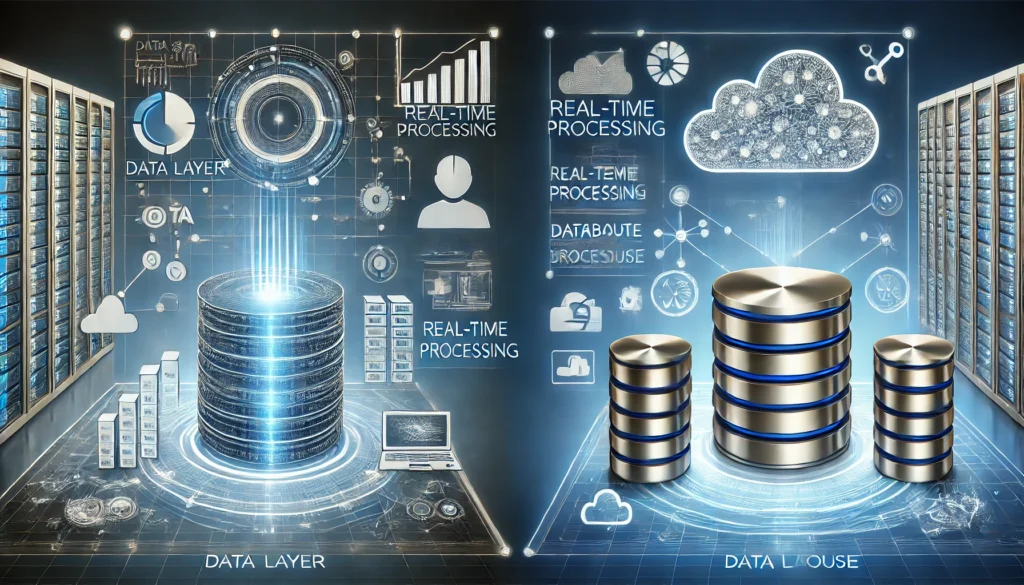If you’ve ever heard the terms data layer and data warehouse, you might wonder if they mean the same thing. While they’re related, they actually serve different purposes. Let’s break it down in a simple way.
What is a Data Layer?
Think of the data layer as the middleman that helps software and applications manage and access data. It’s like a storage system that organizes information and makes sure the right data is available when needed.
Everyday Example:
Imagine you use a food delivery app. When you check your order history, the app pulls that information from its data layer. This data could come from a database, cloud storage, or even a temporary memory system.
The data layer helps apps run smoothly by keeping track of everything in the background, from user info to real-time updates.
What is a Data Warehouse?
A data warehouse, on the other hand, is a large storage system specifically designed for analyzing and reporting data over time. It collects and organizes data from different sources and makes it easy for businesses to find patterns and make decisions.
Everyday Example:
Let’s say you run a coffee shop chain. You want to know which drinks sell best in winter. Your data warehouse gathers sales info from all your stores and helps you analyze trends. This allows you to make smart business choices, like stocking more hot chocolate in December!
Key Differences in Simple Terms
| Feature | Data Layer | Data Warehouse |
| Purpose | Helps apps and systems access data in real-time | Stores and analyzes data for reporting |
| Usage | Everyday operations (e.g., viewing past orders in an app) | Business insights (e.g., tracking sales trends over years) |
| Example | Your food delivery app storing order details | A coffee shop tracking sales data from multiple locations |
Do You Need Both?
Yes! Most businesses use a data layer for smooth daily operations and a data warehouse for big-picture analysis. They work together to make data useful and accessible.
So, next time you hear these terms, you’ll know the difference. The data layer keeps things running in real-time, while the data warehouse helps businesses make smart decisions!

